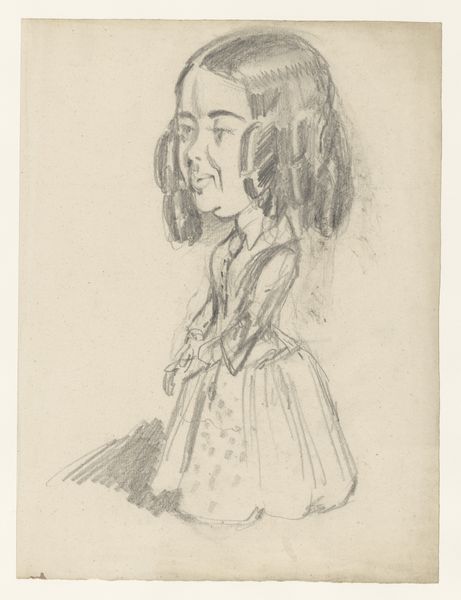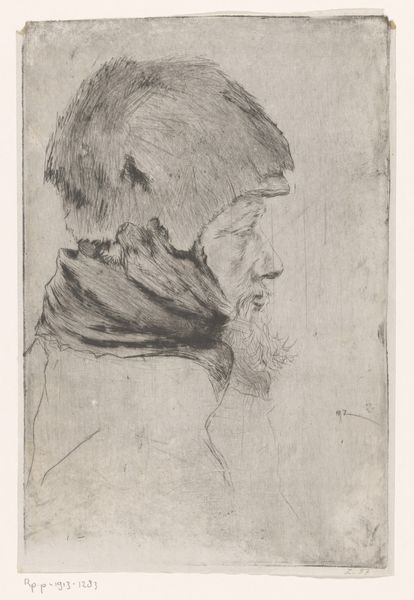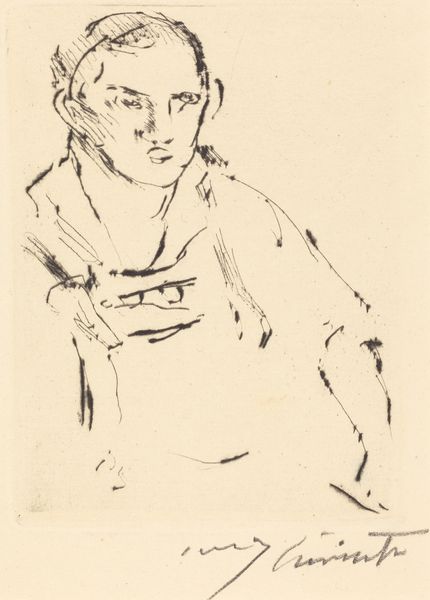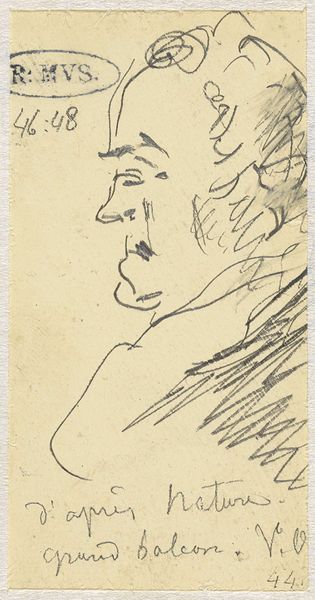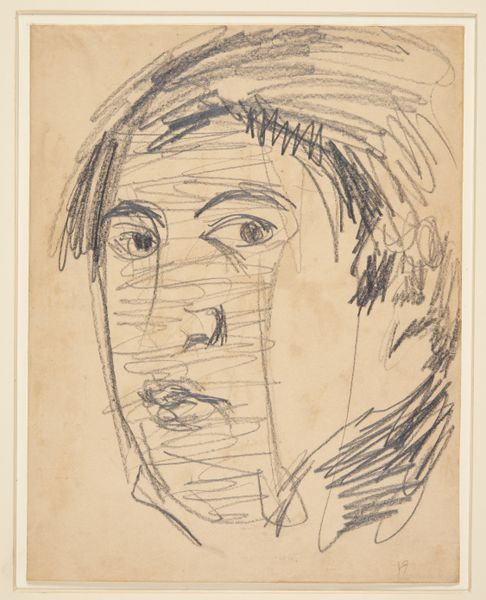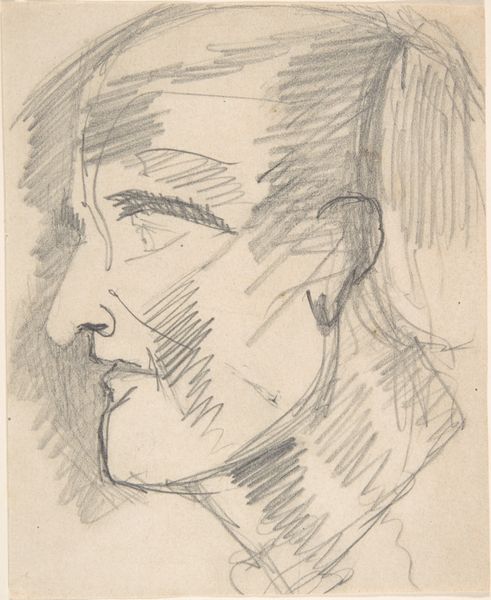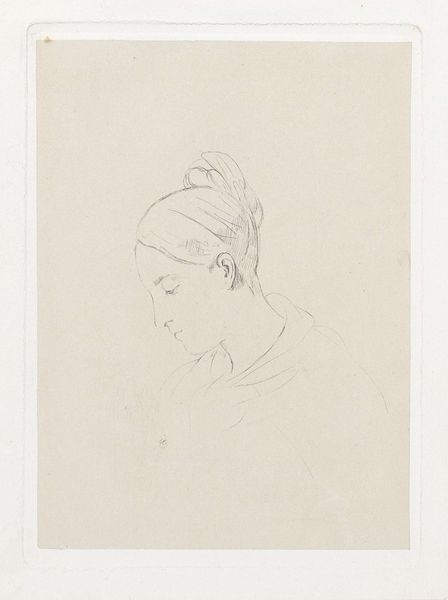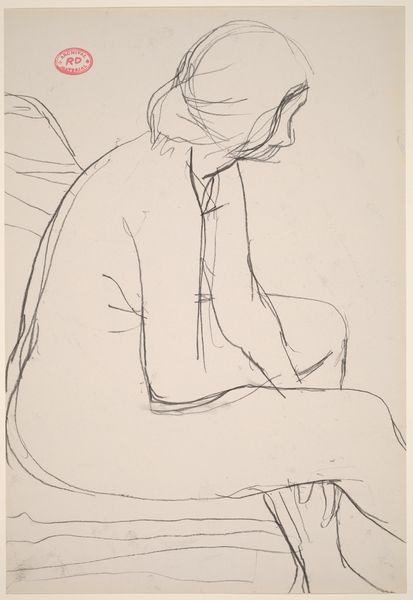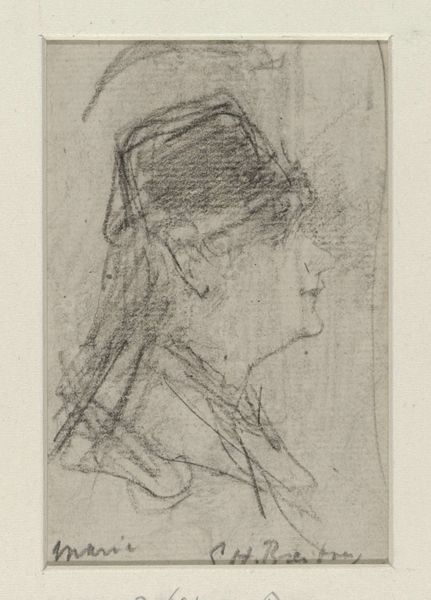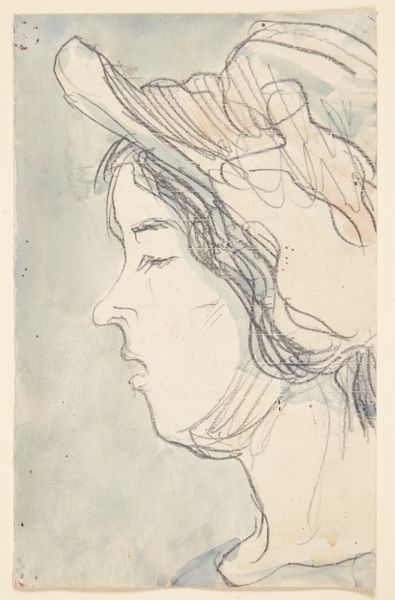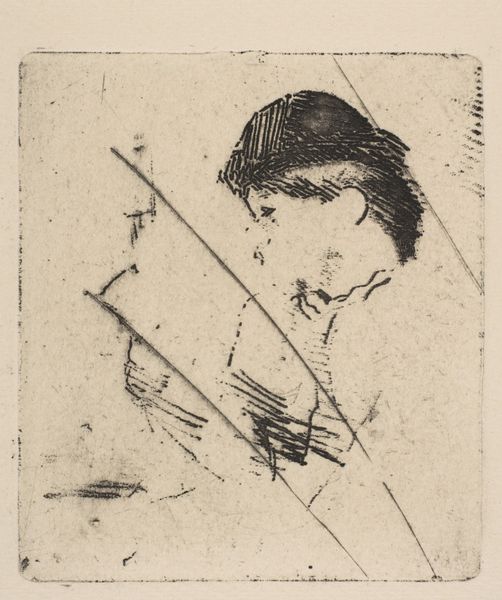
Head of a Tahitian Woman (recto), Sketches of Anatomical Details (verso) 1891 - 1893
0:00
0:00
drawing, print, paper, pencil, pen
#
portrait
#
drawing
# print
#
pencil sketch
#
figuration
#
paper
#
pencil
#
pen
#
portrait drawing
#
post-impressionism
Dimensions: 140 × 88 mm
Copyright: Public Domain
Curator: Looking at this, I'm immediately struck by the intimacy of the piece, like catching a stolen moment. Editor: Indeed. This is "Head of a Tahitian Woman," created by Paul Gauguin between 1891 and 1893. What you’re seeing here is a pencil and pen drawing on paper, part of the collection at the Art Institute of Chicago. Gauguin made this drawing during his time in Tahiti. Curator: Tahiti... you can feel it, can't you? Or maybe that’s just the myth Gauguin created. There's something dreamy in the downward gaze, a peacefulness but maybe also sadness. The hatching gives her hair this weight, an almost tangible darkness. Editor: Absolutely. The weight you describe can also be seen through a social lens; this sketch raises interesting questions. Gauguin often exoticized the women he painted, positioning them within his constructed vision of Polynesian culture. He arrived in Tahiti ostensibly seeking an unspoiled paradise, yet, of course, he brought with him the full weight of European colonial expectations and artistic traditions. Curator: Which makes this, I suppose, more Gauguin than Tahitian. It makes you wonder about his relationship to the model. Was this drawn from life, a fleeting interaction? It has a different energy, almost searching. Not like his bolder painted portraits, they seem less... mediated, perhaps. Editor: These drawings were indeed studies. While they display Gauguin's mastery, they also point to the colonial dynamic in play. They can’t exist in a vacuum. One can find this tension present in the work's afterlives too, consider how institutions grapple with these power dynamics today. Curator: I get it, and it's crucial to acknowledge the history and all. But despite its place in this complex system, its artistic qualities transcend, conveying something deeply personal. Seeing these simple, searching strokes makes me feel connected. It also reveals Gauguin as an adept draughtsman. Editor: Yes, exactly. Perhaps viewing the piece is like having two distinct perspectives merged, but with one singular response or reading—recognizing both Gauguin’s technical skill and historical context to give one unique perspective and vision for those who observe. Curator: A fruitful combination to contemplate! Thanks. Editor: Indeed. Food for thought.
Comments
No comments
Be the first to comment and join the conversation on the ultimate creative platform.
